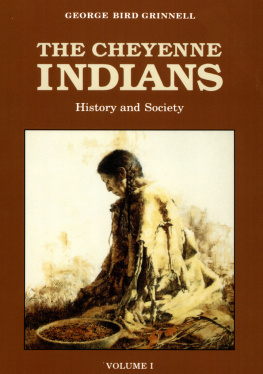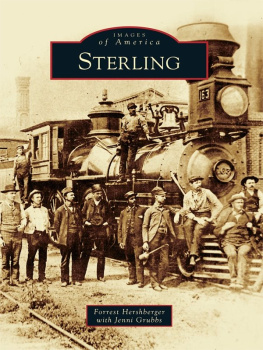Early Days Among the Cheyenne and Arapahoe Indians
JOHN H. SEGER
Edited by STANLEY VESTAL
Early Days Among the Cheyenne and Arapahoe Indians by John H. Seger
FIRST PUBLISHED AS A UNIVERSITY OF OKLAHOMA BULLETIN MARCH, 1924RE-ISSUED WITH AN APPENDIX AS PART OF THE CIVILIZATION OF THE AMERICAN INDIAN SERIES MARCH 1, 1934
SET UP AND PRINTED BY THE UNIVERSITY OF OKLAHOMA PRESS, PUBLISHING DIVISION OF THE UNIVERSITY, AT NORMAN, OKLAHOMA, U.S.A. FIRST EDITION MARCH 1, 1934
CONTENTS
CHAPTER
ILLUSTRATIONS
JOHN H. SEGER AND BRINTON DARLINGTON
FOREWORD
JOHN HOMER SEGER, the author of these memoirs, was born in Ohio, February 23, 1846 of British and Dutch stock settled in America some time before the American Revolution. His people were pioneers and moved steadily westward as the nation expanded. When he was still a child his parents removed to Illinois, where they remained until after the Civil War. At the age of seventeen years he enlisted in Company B, 57th Illinois Volunteers, and went through the Atlanta campaign, participating in thirteen engagements. Some time afterward he settled in Kansas, where he lived until employed by the Indian Agent at Darlington, in what is now Oklahoma. A few years later, as narrated below, Mr. Seger founded the Indian School and town at Colony, Oklahoma, where he has made his home ever since. Probably there is no white man living today who has been in such constant and immediate contact with the Plains Indians as he.
Unfortunately, it has been impossible to include more than a small portion of the interesting material collected by Mr. Seger during his fifty years among the Indians in Oklahoma. But there is enough to convince anyone that he is thoroughly familiar with the life of early days in Western Oklahoma, and that he is a born story-teller who makes the past live for us anew. It is to be regretted that so few historians have his narrative gift. Mr. Hamlin Garland, who is certainly qualified to appraise valuable literary material, has drawn freely upon Mr. Segers stories in the past (e. g. The Spartan Mother), and has recently confessed to me that he intends to rehandle others in a forthcoming volume.
The material which appears here has been selected for its value in illustrating conditions and characters of early days in Oklahoma, and has been arrangedin the mainchronologically. It is believed that this method will create more interest and understanding than a continuous narrative could possibly do in the space available. Such a method gives due prominence to the distinctive merit of these storiesthe human side of the Indian, so generally neglected by historians and other writers.
No attempt has been made to do more than arrange the material, which appears just as it was written by Mr. Seger. Only a very bold man would try to improve on these stories, and an editor would be rash indeed who would tamper with a history, half the interest of which lies in the personality of the teller. Certainly I cannot. I recall too many breathless occasions when, as a boy, I sat up half the night listening to his stories.
W. S. CAMPBELL (Stanley Vestal)
June 1, 1923.
FOREWORD TO THE SECOND EDITION
For some years past this book has been out of print. During all that time there has been a steady and persistent demand for copies of the first edition, now rather rare. Since the book was the first on which I tried my hand as editor, this demand has been very pleasing to me. And now that the author is gone (he died February 6, 1928 at Colony, Oklahoma), it seems fitting that his memoirs, which have to do with such an interesting and vital stage of Oklahoma history, should be published in permanent form. It is gratifying to see the volume included by the University Press in their Civilization of the American Indian Series.
Only one addition has been made to the text of the original editionan Appendix containing: Tradition of the Cheyenne Indians, by Mr. Seger.
This first appeared as a pamphlet from the press of the Arapahoe Bee, and is here printed from a copy presented to me for that purpose by the author himself. The Tradition is not only interesting and authentic, but is one more proofif proof were neededof the confidence reposed in John H. Seger by his Indian friends.
STANLEY VESTAL
University of Oklahoma
November 10, 1933.
EARLY DAYS AMONG THE CHEYENNE AND ARAPAHOE INDIANS
I
I GO TO THE INDIAN COUNTRY
SOON after President Grant inaugurated his Quaker peace policy among the Indians, an agency was established for the Southern Cheyennes and Arapahoes, on the bank of the Canadian River where Darlington, Oklahoma now stands. Brinton Darlington was appointed agent. He was a staunch Quaker and fully in sympathy with the belief that the government could best civilize the Indian by bringing him in contact with Christian people. He also believed that by confining him to a reservation lawless whites could be excluded. The Indian children were to be educated and aided to give their parents instruction in farming and in stock-raising.
Major Weinkoop, the military agent, gladly turned the commissary over to Agent Darlington, who began at once to lay out the grounds of his house and office on the spot where Darlington is now located. Quaker employees came in from Iowa, Indiana and other states. But it was soon found that it was one thing to develop a theory of how to civilize the Indian and quite another thing to put it into execution. There were many houses to build, beef to herd and issue, supplies for the Indians to be received and given out, as well as farming ground to be broken out and fenced. A sawmill had to be constructed and logs cut and hauled to make the necessary lumber and all this work had to be done with a few hands.
The first houses were rough cottonwood and picket houses consisting of from one to three or four rooms. This lumber was green and soon shrank very badly, leaving the houses open and very cold to live in, and the zealots cooled in their desire to aid the red man. There were many changes in the force.
Each spring Agent Darlington sent his employees out to instruct and assist some Indians in farming. A few children had been put to school, but the majority of those of school age accompanied their parents when on the buffalo hunt, which was nearly two-thirds of the time. The Indians very naturally preferred hunting buffalo to farming. Only when game was scarce did they come to the agency and draw rations and they seemed to be satisfied with the conditions as they were.
In 1872 Brinton Darlington died, leaving conditions with the Indians very much as I have described them above. Some may think this a very poor showing for three years of hard work, but few will ever know the real good that was done. The Indians had learned to love and respect at least one white man. They had learned that all white men were not whiskey peddlers and horse thieves. In Brinton Darlington they discovered a white man whom they could both love and respect. At his funeral many stern warriors shed tears, and they have ever since cherished and revered his memory. To this day the sign for agent is the motion of taking something from the mouthwhich sprung from Darlingtons jocose trick of taking out his false teeth to surprise them.











